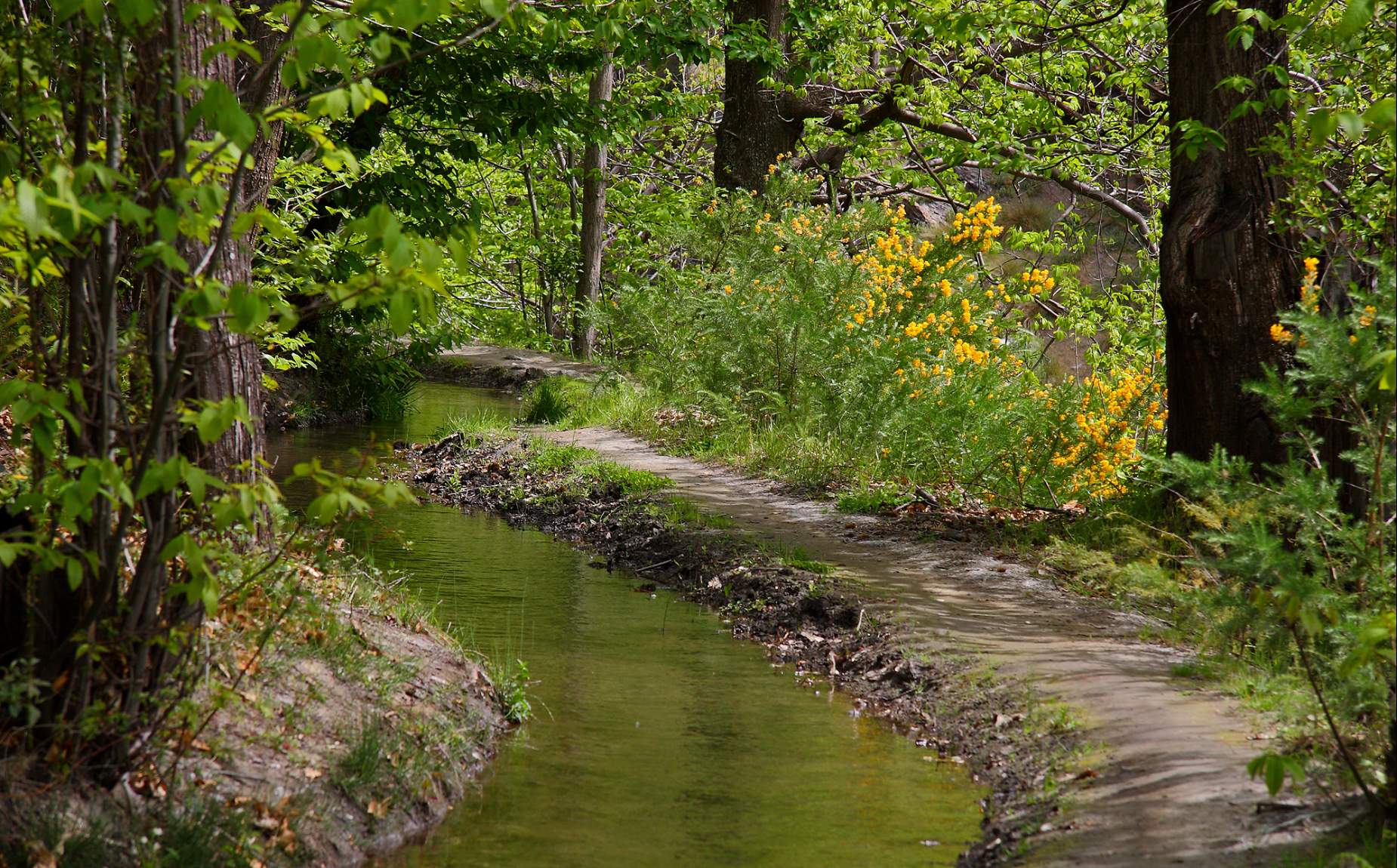The mountain where water is sown
Ancestral waters, medieval ingenuity and eternal life
This medieval system, with ponds, fountains and mills, still survives in the region.
More than a thousand years ago the inhabitants of these mountains devised an ingenious system to take advantage of the melting snow and retain the water on the slopes, which otherwise would soon be lost to the sea, giving rise to a fascinating network of irrigation ditches. The water was, and still is today, collected in the high mountains and diverted through canals masterfully dug in the ground, with no other support than a few slabs of rock in the steepest areas. Already in the 10th century, the irrigation ditches carried the water to permeable places or "colaeros" where the water was distributed freely, generating pastures and penetrating the earth, filling the aquifers. These are the "careo" irrigation ditches. Months later, coinciding with the summer and the greater demand for water, it reappeared in springs next to which the settlements and cultivation terraces were built. Today we can walk along these incredible works of medieval engineering, such as the Almiar irrigation channel, in Cáñar, the one of Los Hechos, in Nigüelas or the High and Low irrigation channels of Pitres that take their waters from the same Mulhacén, the one of Almejígar, Cástaras, Fondón in Almería and a long etcetera. It is impossible to name them all because each village in the sierra has one or more irrigation ditches. The hydraulic system is complemented, in addition, with all kinds of interesting ethnographic elements such as the regulation ponds, the dividers, the fountains, the mills, the washing places and with the knowledge of a unique profession, that of the acequiero.
The mountain of unique architecture
The inhabitants of Sierra Nevada brought, from their places of origin, a way of building adapted to the mountain that is the maximum representation of the Hispano-Muslim legacy in mountain areas of Andalusia. These are villages with a chaotic and organic layout, with narrow streets and passages that connect houses at different heights. Villages that, seen from afar, defy gravity, clinging to the slopes. Simple, flat-roofed houses, built with the two natural elements at hand: stone and wood. The very extension of the mountain range and the isolation of the villages for centuries have made this legacy present itself with a high degree of integrity and authenticity. The best known villages with this architecture are those in the valleys of the Alpujarra of Granada and Almeria, although this way of building can be found in all the regions. On the other hand, on the north side, where the conglomerate and clay slopes can be excavated, another type of architecture was developed: cave houses. The caves have had a great utility throughout history, as warehouses, cellars and corrals. But the great singularity of the regions of the Zalabí Valley and Marquesado del Zenete, is that the troglodyte takes center stage as a house, a place of residence for families. Only the chimneys protrude from the hill that covers the house, and a humble white facade invites you to penetrate inside the earth. The sensation of staying in a cave is very special, you will experience the silence and comfort of the mother earth that welcomes you and you will discover that bioclimatic architecture has been done here for centuries.




